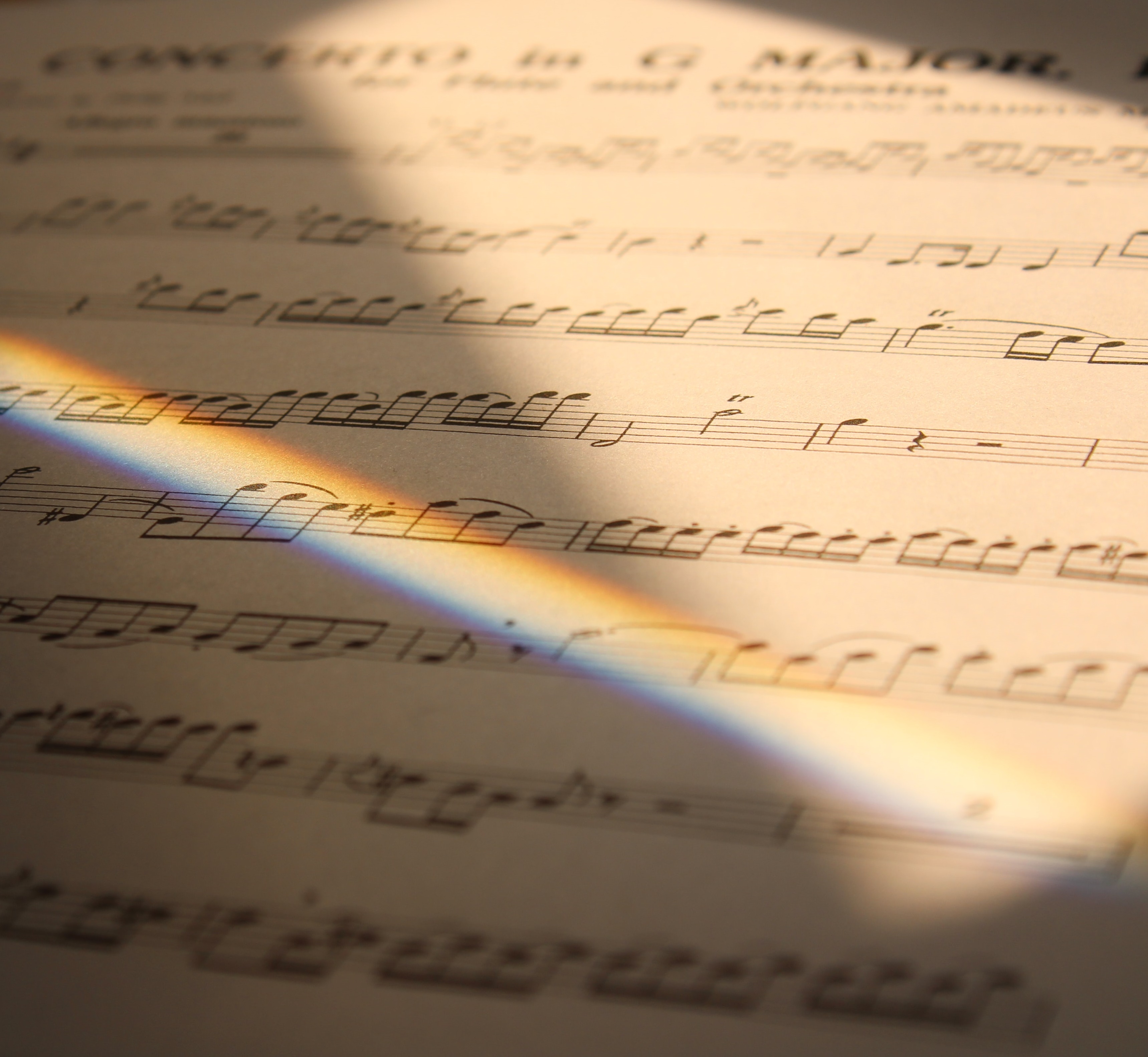The selections below are from a concert I played called "The Essential Pianist". Its purpose was to give people new to piano a tour of some of the most famous icons of the literature. On the program notes I added asterisks to each selection to indicate the difficulty level. One asterisk meant most people could play it in the first year of study, the more asterisks the higher the level of difficulty. They (asterisks) are a relative guide only. Some people will play these sooner, some later depending on many different factors. On this webpage I have substituted eighth notes 𝅘𝅥𝅮 for asterisks.
- If you are a pianist, you've played these, so for you this is a stroll down memory lane.
- If you are a teacher, you've probably taught these and, knowing the myriad ways in which students can mangle them, for you this may be a return to nightmare alley.
- If you are a student somewhere in the realms of intermediate piano skills, go find these, you can play them… most of them.
- And if you are an innocent bystander, welcome, I hope you'll have a good time.
- You can also find all of these pieces on YouTube being played by people from ages 6 to 86 both as amateurs and professionals. You'll find incredible differences in tempos and interpretations. That's one of the fascinating things about music, how the same piece can change when it's filtered through a different personality.
𝅘𝅥𝅮 Prelude #1 in C Major from Book I of the Well-Tempered Clavier by J. S. Bach (1685-1750)
The Well-Tempered part of that title refers to how the instrument was to be tuned. It is sometimes referred to as the Old Testament of the pianist's Bible (the New Testament being the 32 Sonatas of Beethoven). It is a monumental work which Bach wrote to prove that the "new" Major/Minor key system was viable. At the time, the Major/Minor key system was an avant garde cutting edge newfangled idea. This opening prelude is accessible to any good (i.e. someone who practices faithfully every day) student. It's the only first year piece in the collection. After that Bach took the gloves off in a no-more-mister-nice-guy manner. Most of the rest of the collection is the preserve of late intermediate or advanced players only.
𝅘𝅥𝅮𝅘𝅥𝅮 Sonatina #1 in C Major Op. 36, 1st Movt. By Muzio Clementi (1752-1832)
Clementi was Italian but raised in England. He was not only a superb pianist, but he also manufactured pianos. Clementi pianos had a more brilliant sound and a harder action than other pianos so he had to travel all over Europe demonstrating the instruments. He was also something of a penny pincher. A contemporary found Clementi and one of his students up to their elbows in soap suds washing their shirts. Clementi complained that the laundry prices were robbery and besides, they ruined the lace. His Op. 36 collection of sonatinas is one of the standards of the literature because they are such fun to play.
𝅘𝅥𝅮𝅘𝅥𝅮𝅘𝅥𝅮𝅘𝅥𝅮 Sonata #16 in C Major, K545 1st Movt. By W.A. Mozart (1756-1827)
There's a connection between Mozart and Clementi. They met each other in a piano duel at the palace in Vienna. Clementi had one of his new pianos, and Mozart had to borrow one from a friend since the royal pianos in the palace were all royally trashed. The verdict after the two musicians played was that Clementi was the better pianist, but Mozart was the better musician. Mozart was not a penny pincher. He was terrible at handling money. A friend found Mozart and his wife dancing madly around and around their apartment one day to keep warm since they couldn't afford coal to heat the stove. The friend promptly went out and bought them a supply of coal.
𝅘𝅥𝅮𝅘𝅥𝅮𝅘𝅥𝅮 Fur Elise, Bagatelle #25 in A Minor by Beethoven (1770-1827)
Probably one of the most iconic pieces of all piano literature. Beethoven supposedly wrote it for an 18 year old student he was in love with. He had a tendency to fall in love with women who were hopelessly above his station. I can't tell you how many people have told me they played this one in grade school… but they only learned the first page. Past the first page things get a little more complicated. Once Beethoven established himself as king of pianists in Vienna he had shootouts with every visiting professional who came through town. Whereas the dual between Clementi and Mozart was a relatively civilized affair, Beethoven had a tendency to demolish everyone he played against. One pianist was so humiliated, by his run in with Beethoven, he made it a requirement before he went anywhere in Vienna that Beethoven not be invited.
𝅘𝅥𝅮𝅘𝅥𝅮𝅘𝅥𝅮𝅘𝅥𝅮 Valse in C Sharp Minor Op. 64 #2 by F. Chopin (1810-1849)
Every time I hear this valse I'm reminded of a movie that came out in the 1940's or 50's about the life of Chopin called "A Song To Remember". The piano playing in it is magnificent. The story of Chopin's life isn't even within shouting distance of the facts, but the playing is worth listening to. Apparently, they used Jose Iturbi for the actual playing. Since producers thought his hands were too muscular, they used another pianist's hands for filming. Cornel Wilde, the actor who played Chopin, couldn't find Middle C. He said later that he was invited to dinners all the time, and afterward people expected him to play the piano. It was a lot of free meals under false pretenses.
𝅘𝅥𝅮𝅘𝅥𝅮𝅘𝅥𝅮𝅘𝅥𝅮𝅘𝅥𝅮𝅘𝅥𝅮𝅘𝅥𝅮𝅘𝅥𝅮𝅘𝅥𝅮𝅘𝅥𝅮 La Campanella in G Sharp Minor from Grandes Etudes de Paganini by F. Liszt (1811-1886)
This one is known among pianists as "extreme" piano complete with a suicide gulch at the end. The etudes de Paganini are among the hardest pieces ever written. Liszt put an encyclopedia's worth of piano technic pushed to its limits in this one. He said he came up with the idea for La Campanella while traveling through the snow in a horse-drawn sleigh: the snow, bells jingling on the horses harness, biting winds and huge church bells tolling across a hushed landscape complete with lacy icy figures like being inside a snowflake… all of it's here.

